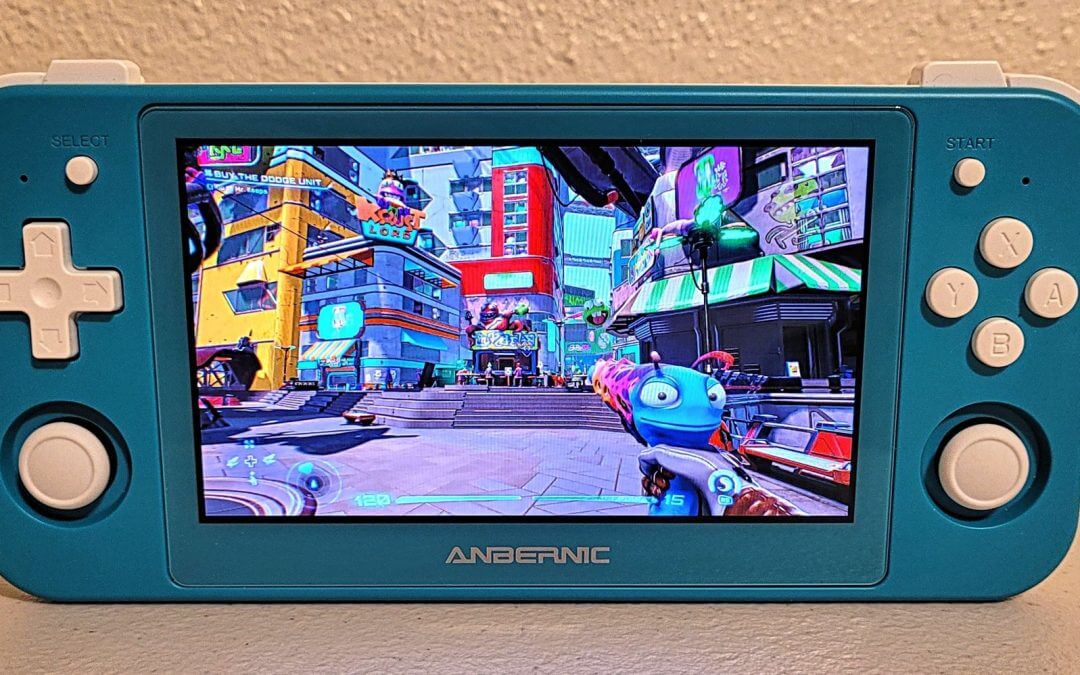Well well, look at Anbernic flexing a little bit of Android muscle. That’s right, Anbernic have released an Android-focused handheld with none of the half-in-the-water dual-boot stuff they’ve been experimenting with in recent releases. It’s a bold move jumping into the deep end of an OS which, up until now, they have not provided a very polished or feature-rich experience for. Then again, a T618 powered handheld in a relatively budget price bracket, released here at nearly the end of 2022, now where have I heard that before? Such a close resemblance to a big competitor could all just be a big coincidence of course, but that’s speculation best left to people with a better eye on the industry. For me? I just want to play with it and subsequently be able to inform you all if you should spend your hard-earned moolah on a unit of your own, so without further ado let’s get down to that.
Firstly, though, speaking of moolah, just how much moolah would a moo lah moo if a moo lah could- nevermind that doesn’t make sense. How much dis cost? Well you can get it right now from a variety of sources, including Amazon, Aliexpress, and of course directly from Anbernic themselves for a starting price of $157.99.
So what bells, whistles, and other noisemaking stand-ins for features does this handheld have to offer for that price? Power? Comfort? Versatility? A diverse portfolio of fairly decent headshots from its failed attempt at an acting career? The only way to know is to read on.
Hardware

So we begin where it seems we always must, with the processor chip, the brains of the operation, and in the RG505 this is the Unisoc T618. This is an eight-core processor sporting two Cortex A75 cores and six A55 cores all running at 2GHz. These could all just be meaningless code words to some, I could say it’s got the Ubergrafx 2900H Delux in it, but these cores are actually pretty common in other recently covered handhelds. After all, the quad-core Retroid Pocket 3 had a single A75 paired up with three A55s, and the quad-core 353 line of products were rocking four A55 cores, so you can get an idea of the overall structure this T618 is operating with compared to the capabilities of devices you perhaps already have some experience with.
Another important note is that the GPU in the T618 is a Mali G52MP2, and you’ll find certain emulators have specific settings that are designed as being a better option or workaround for Mali GPUs. Lastly in terms of the brains this device is sporting 4GB of LPDDR4X RAM, which is a solid amount of overhead compared to some of the relatively memory-starved offerings from recent budget Android machines.
The storage offering is also a nice boost, after a lot of devices have been giving us a meager 32GB of storage we jump up to a nice 128GB of eMMC storage onboard. On top of that we find an SD card slot on the bottom of the device with support for larger exFAT cards. With a decent amount of PS2 and Gamecube compatibility coming along down the line here, this extra space is definitely a much-needed upgrade from its sparse predecessors.
Thankfully, despite early rumors pointing to a much smaller capacity, the RG505 is shipping with a reasonably capable 5000mAh battery. Anbernic claims this will grant the device as much as 8 hours, which might be true under the right circumstances. However, with such a wide variance between supported systems and games you may be able to play on this device, you’re going to want to examine the types of games you want to play on it before you consider that estimate to be accurate. Mostly NES and Gameboy titles? Love a good Tetris marathon? Probably. Zippin through the wonderful Windwaker may leave you quite a bit shorter on endurance.
So then let’s round up the rest of this technical stuff here, with connectivity options including your standard dual-band ac-capable wifi, which isn’t as exciting as Wifi 6 but will be plenty sufficient to stream to this low-resolution device with plenty of bandwidth overhead. It also boasts bluetooth 5.0, which should provide better stability and range than their previous devices. You’ll find a single USB-C port on top of the device to provide for all the USB functionality of the device, as well as a 3.5mm headphone jack in case the big smartphone manufacturers haven’t already blackmailed you into going wireless with your earbuds. On the bottom besides the speakers and oddly placed power button you’ll just find the micro-sd card slot for storage expansion. It is slightly bizarre that they managed to fit so much less IO on this device than their much smaller yet similar form in factor 353M.
Finally speaking of the screen, it’s a bit of a familiar one. Like with Anbernic’s previous RG503, the RG505 seems to be using a 4.95 inch OLED panel in 960×544 ostensibly sourced from unused Vita screen stock. Being an OLED, it is a pleasant looking screen, but considering it’s a panel that is over a decade old it does fail to “WOW” like the modern OLED panel you’d find in, say, the new Nintendo Switch. It’s got a pretty limited brightness range, doesn’t quite get as bright as you might like for well-lit conditions, and the low resolution suffers when streaming more modern games even on such a small display. However, this resolution does allow for perfect 2x scaling for PSP games, a feat even the Vita often didn’t have the raw power to actually pull off for most games. My gripes with the display are not that it is bad, simply that it is older and you should likely temper your expectations of it. It’s a good display that I think most consumers will be happy with, and that’s about the best I can say.
Inputs and Comfort
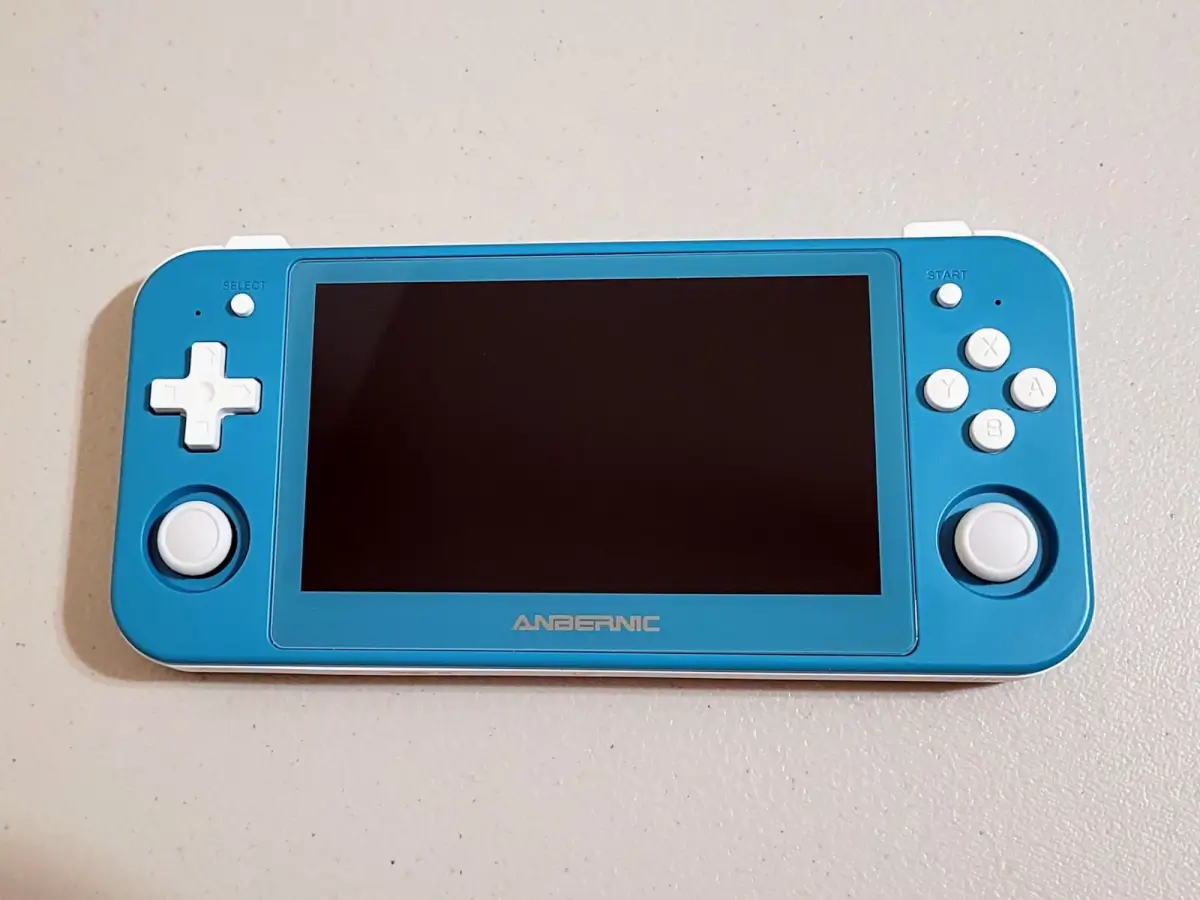
When we start getting to talking about the ergonomics of this device, it should be pretty clear to see from pictures of it that we’re basically dealing with an oversized 350/351/353M brick that Anbernic seems to favor quite frequently. It measures at a fairly sizeable 18.9cmx8.7cmx1.8cm (7.4inx3.4inx0.7in) and 286 grams (0.6 pounds) that fills the hands quite comfortably. You won’t find much that surprises you here ergonomically if you’re familiar with Anbernic’s products, but let’s talk about it.
We’re gonna start, as we always seem to, with the dpad and face buttons. If I’m being honest this section could just be a “you know how the dpad and face buttons on every other Anbernic handheld feel? Exactly like that.” Then I could move on. They’re good and responsive, just the right spring to the membrane without being either too stiff or too mushy, they’re nice. Anbernic nailed this years ago and is just continuing to flex at this point, but I suppose it bears repeating for new readers. You’ll also find the start and select buttons here, along with a microphone for trash talking noobs in Halo 2 on Xbox Live. Or, like, less aggressive stuff I guess if you’re boring like that.
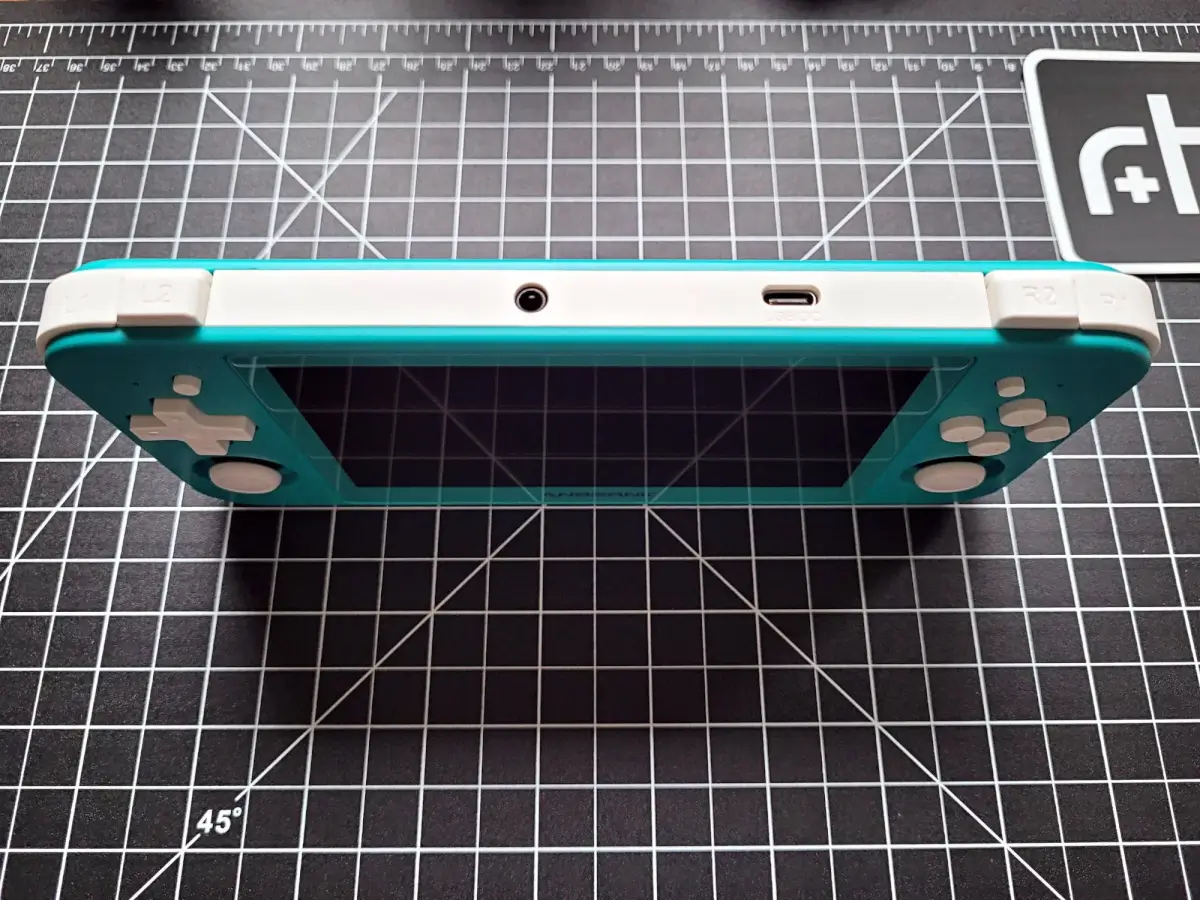
With the thumbsticks, Anbernic have wisely returned to the Hall-effect joysticks they featured in the 353M, but at least in my review unit these felt a bit… off? They weren’t quite as smooth and nice feeling as the ones featured in the 353M, and the prevailing theory in the community seems to be that they have gone with a less premium feeling enclosure for these joysticks. Despite this minor gripe, these are otherwise supposed to be drift-free joysticks due to the lack of potentiometers you would find in standard joysticks, and that’s always nice. They also have a nice rubberized coating that manages to feel better and grippier than bog standard Switch sticks. They’ve got the same recession we’re used to in these handhelds, to keep the sticks lower for better portability and to keep them out of the way during dpad and face button usage, but considering this system can play a fair few dual-analog games they’re not terribly comfortable where they are. I’m not sure how this could have been resolved without extending the device grips downward or something, though.
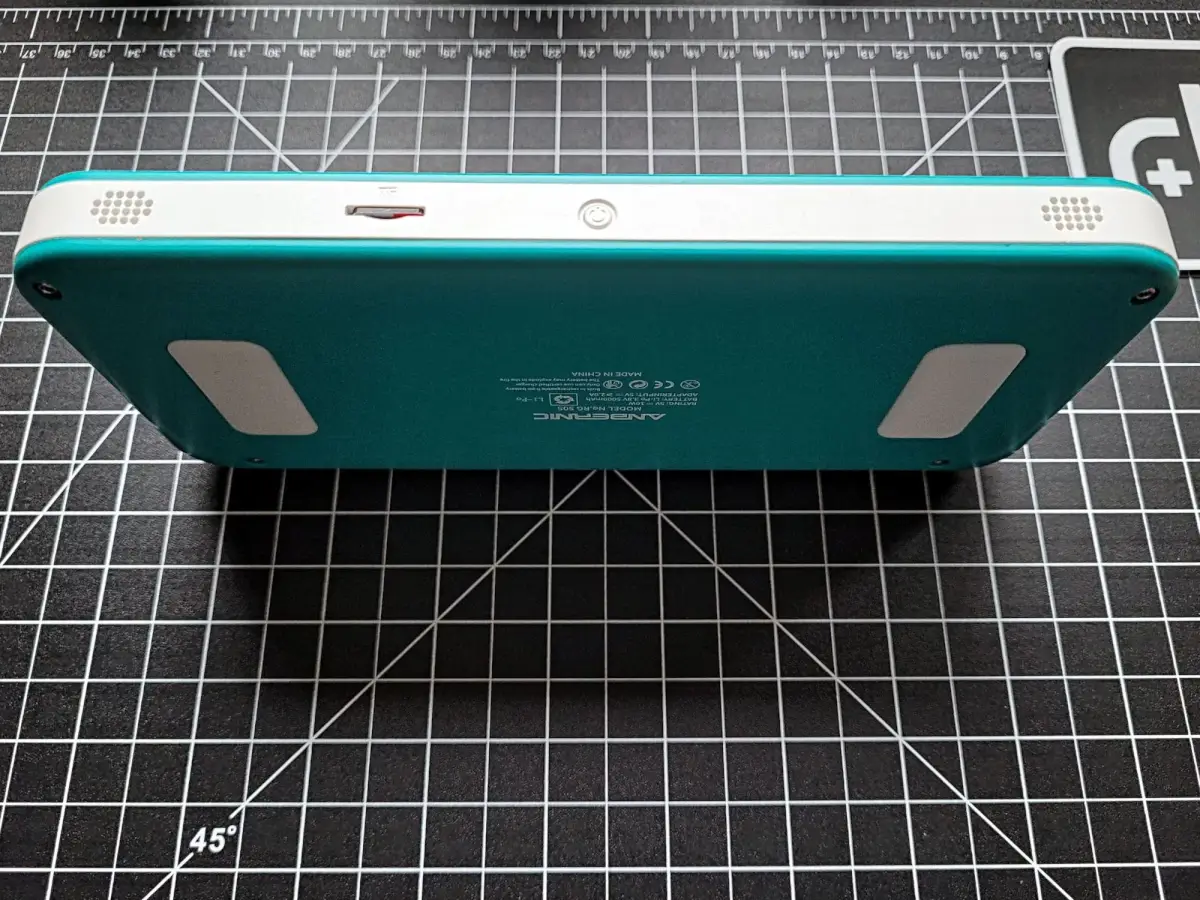
Along the right side of the device we’ll find a Home button, as well as the mysterious Anbernic button that will take you to their custom frontend. On the opposite side a volume rocker is nicely recessed into the body to make it harder to accidentally press during gameplay. On the bottom you will find the power button? Wait, what? The bottom? And it’s tiny and recessed? I guess it’s not quite like trying to hide your start and select along the edges, but man is that power button in an inconvenient spot. Lastly, we’ll look at the L1/L2 and R1/R2 up on the shoulders, that continue to follow the inline design that most Anbernic handhelds seem to sport. Thankfully, following in their recent tradition, these buttons are at slightly different heights to make it easier to differentiate blindly between the two. It’s not much, but it’s something. They’re clicky and respond fairly well, but they do present some comfort issues for reaching the L2/R2 while using the analog sticks.
Software and OS
Um, it’s Android, so goodnight!
Well ok, so it’s not exactly stock Android, Anbernic have crafted their own little bits and bobs to make their Android image, currently running Android 12. When you first boot up the device you’ll be greeted by a diverse range of preloaded apps, some of them being ones that Anbernic apparently thought would make for good utility, and a lot of them being various emulators. I’d personally recommend just going ahead and deleting them all and downloading your favorites from either the Google Play store or through the browser (depending on the emulator in question), but for those of you who are new to Android emulation these can provide a good idea of what emulators would be worth looking out for. You’ll want the likes of Dolphin, AetherSX2, Yaba Sanshiro 2, Redream, Mupen64Plus-FZ, Duckstation, Drastic, PPSSPP, and Retroarch to cover a wide range of emulation bases.
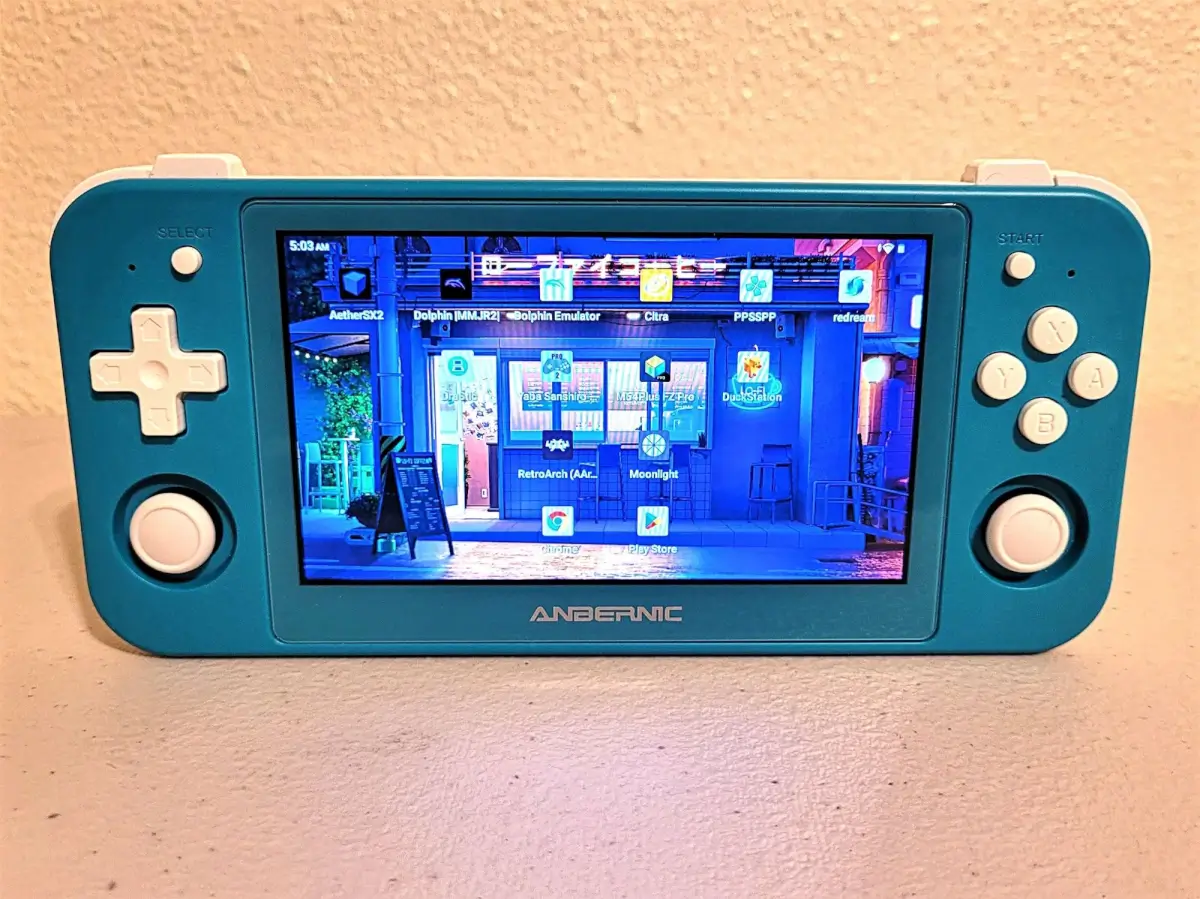
I briefly mentioned a mysterious Anbernic button in an earlier paragraph, well there’s also a menu option available in the drop-down shade called “Game Mode.” This will swap you over to a more Emulation Station type interface, geared around making your emulation experience seamless and pretty. It’s still a bit on the slightly janky side, and you may have a more mature frontend you prefer, but it’s serviceable enough to provide for newbies or those who simply tire of tinkering. It provides a unified interface that gets the job done, but more veteran users will probably miss some of the refinement and more robust features of competing frontends.
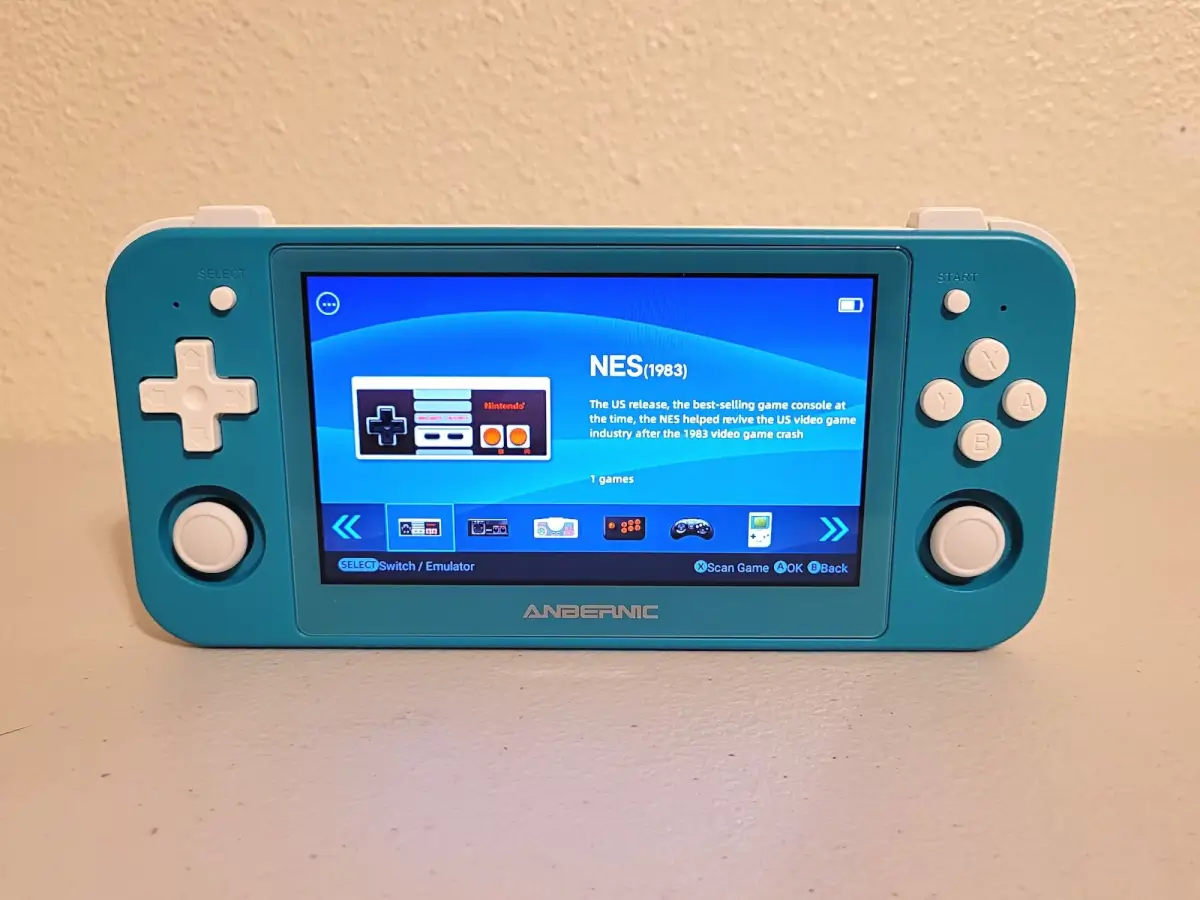
Did I mention Google Play support? I think I did, very briefly, and that’s correct it’s here! Now yes, many out there will be quick to point out the performance hit that can be induced by Google Play services, but this does at least remove some of the limitations and workarounds that were previously required to get many apps to work, as well as allowing specific games that require Google Play services to now run properly. It would certainly be nice to see a toggle function for Google services like you see on a certain competitor’s Android build, but perhaps that will come at a later date. In the meantime, I personally find myself willing to suffer a bit of performance for the sake of the sheer convenience of downloading all my favorite apps and emulators straight from the store.
Some of the steps that have been made in refining and updating this OS shows that Anbernic is getting to the point of having a competitive Android build, which is more than I was able to say about many of their previous dual-boot devices. It’s good to see, especially since this device does not have any other operating system to lean on if the Android one falls short. They also include some nice additional features like a button mapper, essential for playing your favorite mobile games that lack controller support. It would be nice to see them perhaps add some more built-in software, like perhaps a way to measure metrics or the aforementioned Google Play switch, but for the moment this build will give you everything you need to have an excellent time playing and emulating games on Android.
So What Can It Play?
| Fully Playable |
|---|
| Atari 2600, Atari 5600, Atari 7800 |
| Nintendo Entertainment System |
| Super Nintendo Entertainment System |
| Nintendo Game Boy |
| Nintendo Game Boy Color |
| Nintendo Game Boy Advance |
| Nintendo Virtual Boy |
| Nintendo 64 |
| Nintendo DS |
| Sega Master System |
| Sega Genesis / Mega Drive |
| Sega 32X |
| Sega CD |
| Neo Geo Pocket |
| Neo Geo Pocket Color |
| Sony PlayStation |
| Sega Saturn |
| Sega Dreamcast |
| Sony PlayStation Portable |
| Nintendo DS |
| Mostly Playable |
| Oops? No, this section is empty on purpose. |
| Somewhat Playable |
| Sony PlayStation 2 |
| Nintendo GameCube |
| Nintendo 3DS |
| Out of Reach |
| Nintendo Wii |
| Microsoft Xbox |
| Sony Playstation 3 |
Speaking of playing and emulating games on Android, what can this little handheld play? A lot. It plays a lot. For a system of this price, this is an incredibly impressive list of potential emulation capabilities. You put this in the hands of any kid in like 2005 and he has access to almost every game he’s ever wanted. Then also when his parents call the cops on you for interacting with their child at the park, you’ve got an awkward conversation to have about time travel and stuff like that, and it gets double weird if the child you chose was you because then there’s all the paradox stuff and the space-time continuum, and… I’ve gotten off topic. When our reasonably budget-oriented handhelds are reaching the limitations of what is currently possible for Android emulation, it’s pretty exciting to see where it could go from here. PS3 and 360 emulation are a pipedream at the moment, with even x86 emulation of those devices being in fairly early states of compatibility. So I guess we’re waiting on, like, Vita and Switch? They’re coming, but for now let’s focus, and appreciate what we have now despite the temptation to long for the emulation future.
PSP
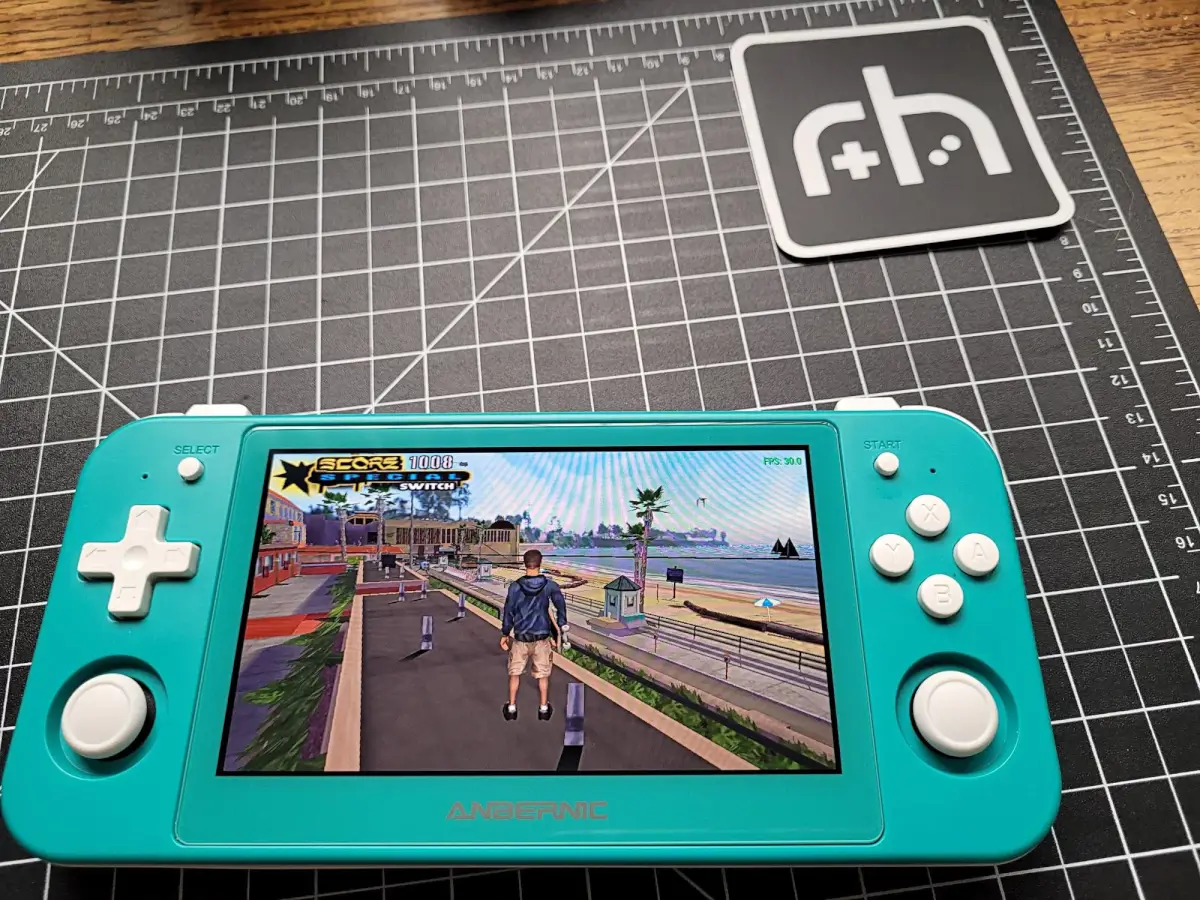
So PSP is actually on the fully playable list along with other formerly “Mostly Playable” systems like Saturn and Dreamcast, but it’s worth talking about this device briefly. That Vita screen is perfectly suited for precise 2x resolution scaling of PSP games, and the processor is more than capable of delivering that 2x resolution in the entire PSP library (albeit with some tweaks for certain titles.) Needless to say, if nothing else this is a wonderful PSP device, but it’s a good thing the fun doesn’t stop there.
PS2
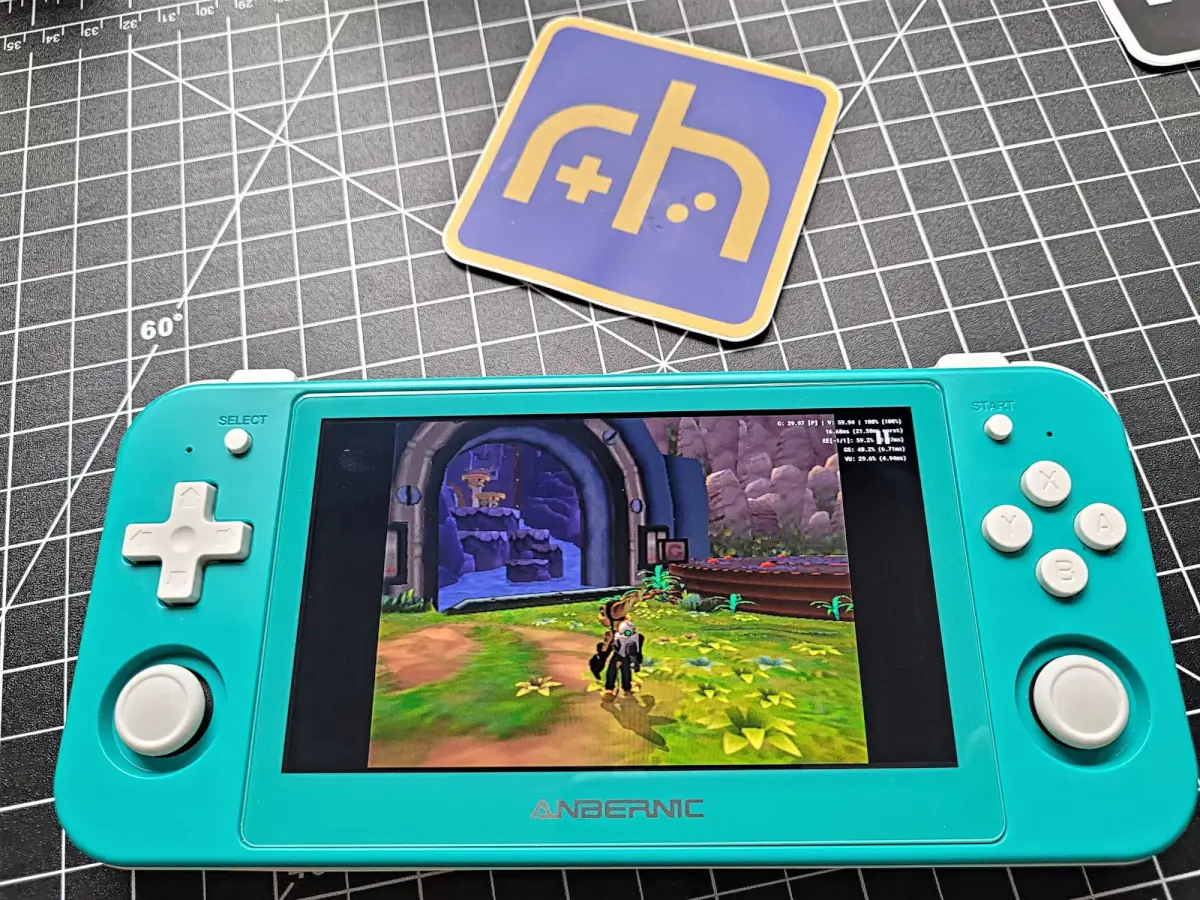
PS2? On Android? That’s right, what may have formerly been nearly impossible was made possible just a little over a year ago by an emulation wizard, who has sadly been badgered out of his spellcasting for the moment. Nonetheless, the AetherSX2 emulator runs really well on the RG505, and you can get a surprising amount of the library to run with just a little bit of speedhacking or underclocking.
3DS
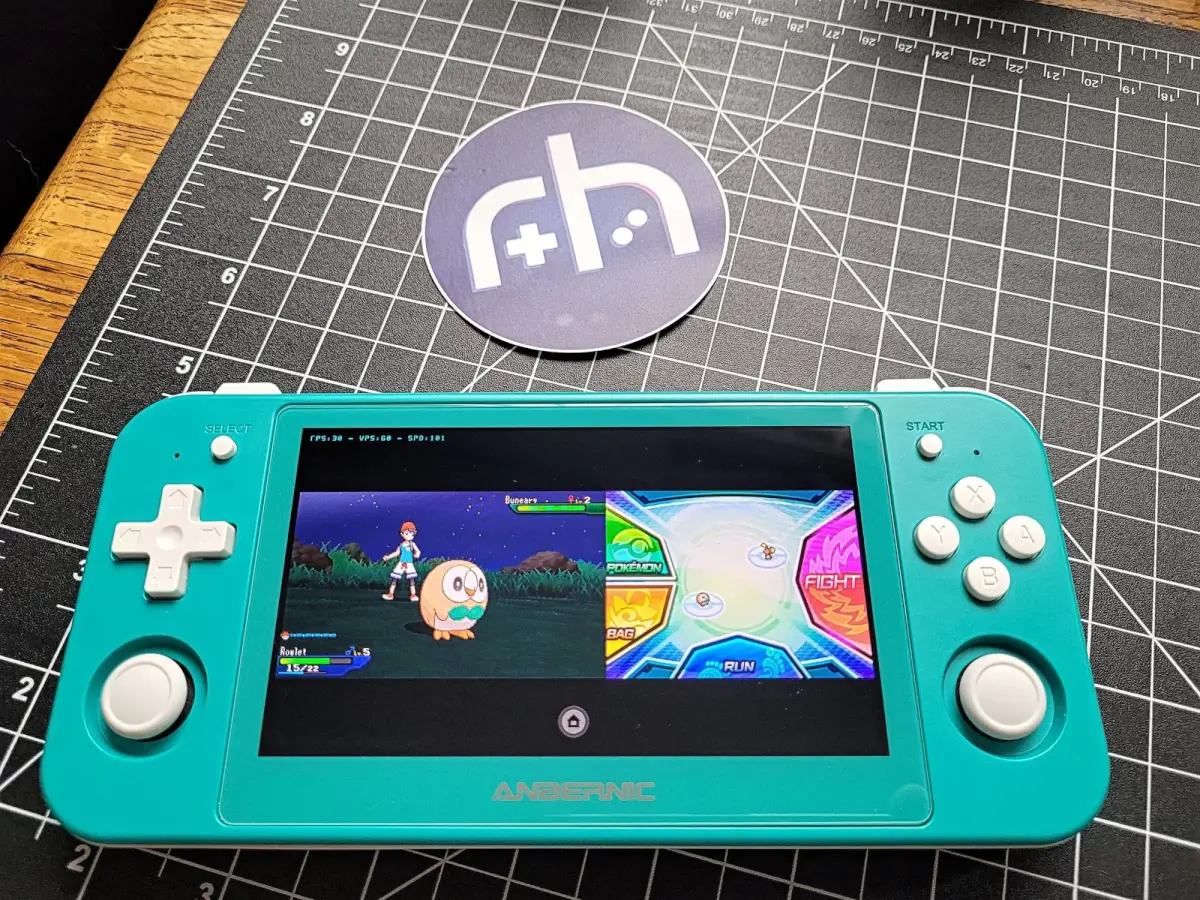
3DS can be a little bit dodgy on this system due to a few factors, such as the development of the Android version of Citra still being fairly young, and some support issues with the Mali GPU present in the RG505. I had some odd graphical issues in some games, even when they otherwise ran at full speed, so definitely expect some issues when attempting to emulate the 3DS on this device. I have seen, however, that the development team are making efforts to update the emulator for better performance on Mali GPUs and the like, so we could perhaps see better performance in the near future as development matures.
Gamecube
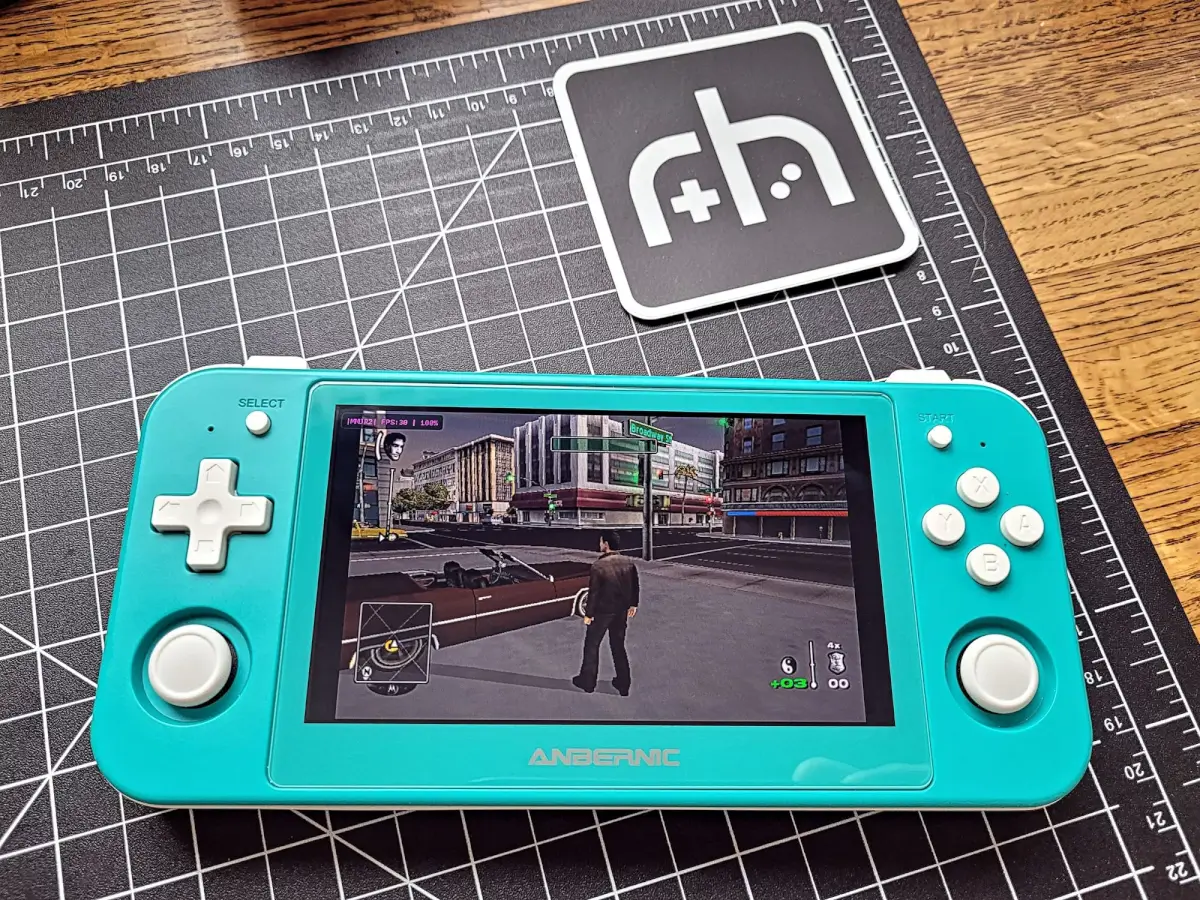
The Gamecube, for back when you had enough friends to need four controller ports. Dolphin development on Android is perhaps one of the more maturely developed of these higher end systems, and there are numerous performance-oriented branches of the App that will help it to run even better on this device. You’ll certainly need to rely less on PAL versions of games for a lot of the easier to emulate games on the platform, with some of my testing allowing full speed and full resolution from NTSC games. However, likewise, there is a hard ceiling to how much of the Gamecube library you’ll be able to get playable on here, and many of the ones nearish to the ceiling will require extensive tweaking and sub-native resolution scaling to enjoy.
Native Android
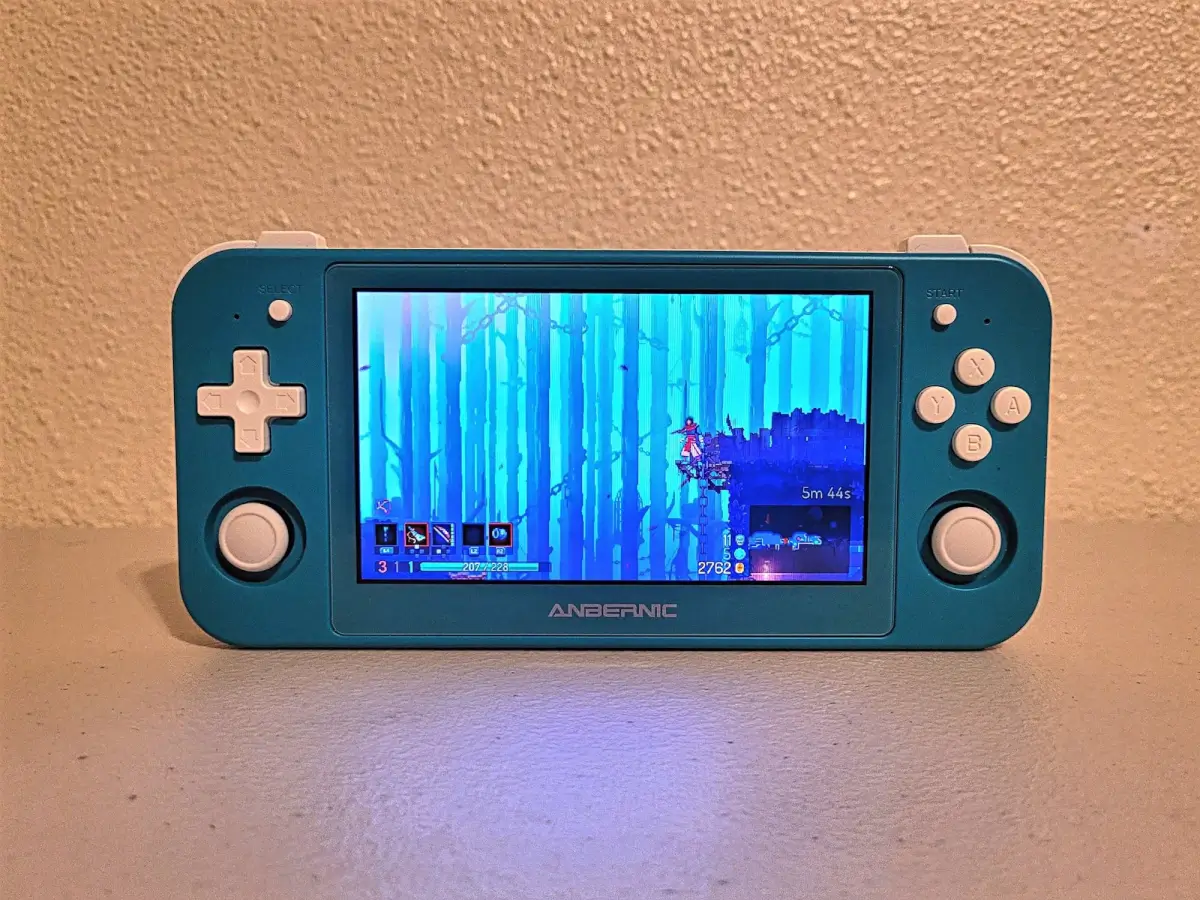
Android is chock full of amazing ports and games when you get past the generic gachas and deck builder type games that exist almost exclusively to drain your wallet of funds a few dollars at a time. The RG505 has enough power to take advantage of this large library and enjoy numerous games that are otherwise unavailable through emulation. I have personally tested (on this chipset, not all on this device) the likes of Knights of the Old Republic 1 and 2, Jade Empire, Dead Cells, GTA San Andreas, as well as unofficial ports like Half Life 1 and 2 or Hollow Knight. Unfortunately, I have run across a game or two that just didn’t seem to recognize the R2 and L2 buttons for some reason, such as Dead Cells. This is probably something that can be updated through software, but it is an unnecessary obstacle.
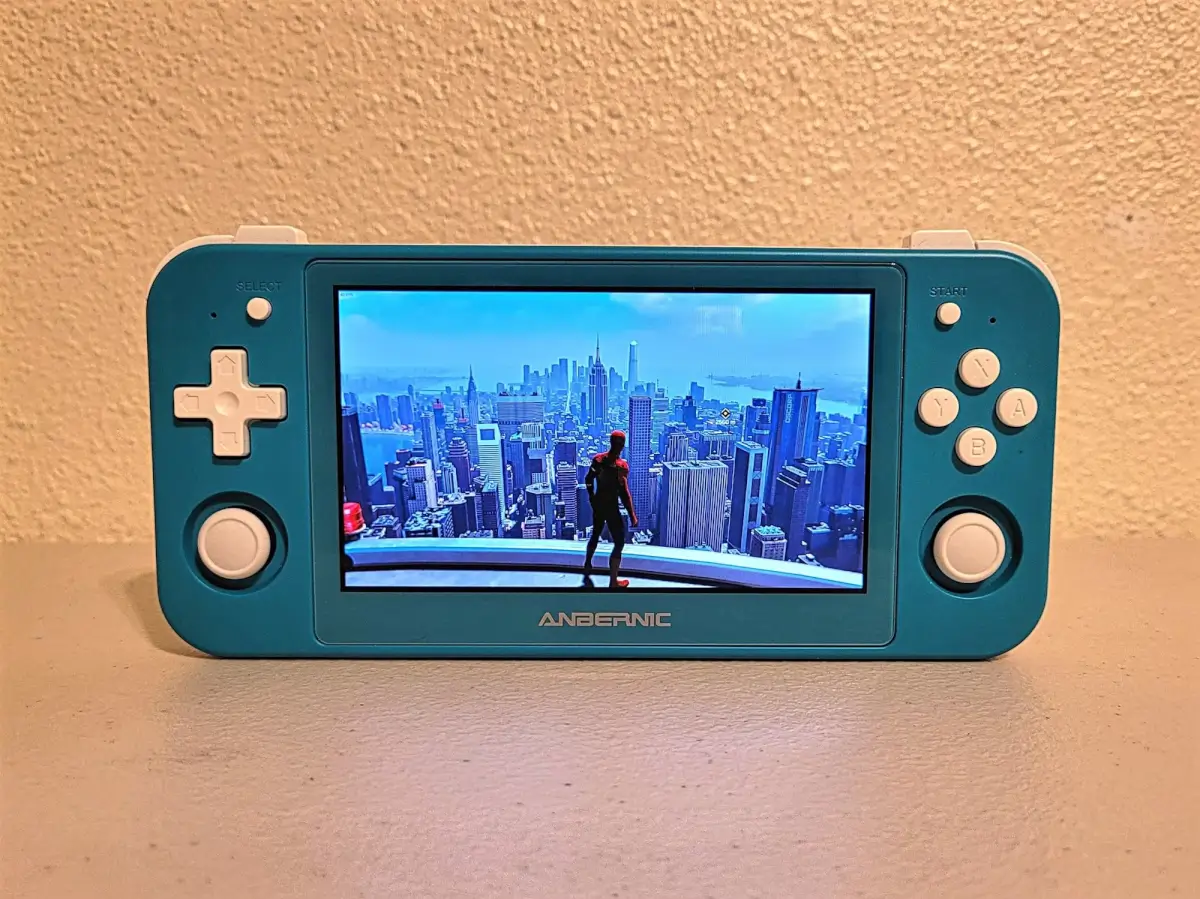
Meanwhile the usual advantage of game streaming exists, with Android giving access to all the usual suspects like Xcloud, Steam Link, Geforce Now, Moonlight, and even remote streaming from Playstation consoles. Despite early reports of Moonlight not recognizing the controller on the RG505, I was able to stream via Moonlight without issue on this device, so it must have been an issue that was cleared up. The 5GHz wifi will give you plenty of bandwidth for streaming, but unfortunately the low resolution screen doesn’t fare well here even with such a small screen size, and it required some real finger gymnastics to hit the R2 button to swing in Spiderman whilst still keeping my thumbs on the thumbsticks for movement and camera control. I’ve got fairly massive hands, so I can only imagine the concerns for smaller handed folk.
Conclusion
I’m going to be honest here, I was able to find plenty to like about this device, but not a whole lot to love. It’s just a device that does well enough not to dislike it, but not enough to shine in any particular area. So many of my experiences with various aspects of the device could easily be summed up with “good enough.” This could be fine if this segment of either the price or power market was under-represented, but as it stands there are several other devices that do what this device does but better. I’m glad to see Anbernic putting power under the hood, and making real strides into Android, and I look forward to seeing if we can have that signature Anbernic build quality on a real wow-worthy Android powerhouse in the future. For the time being, however, my recommendations for the RG505 will come with a few select conditional caveats.
Delicious:
- Plenty of power gives you access to a huge portion of the available emulation library on Android, as well as a great variety of exciting Android ports of popular games.
- The price is right for a quality device giving loads of value in a relatively budget range.
- A nicely sized battery was a pleasant surprise due to early rumors of a much lower capacity, and this 5000mAh capacity gives plenty of hours of gameplay instead of battery anxiety and constant recharges.
Suspicious:
- A slightly dim and low resolution display holds it back from being a great device for modern game streaming, as do the inline shoulder buttons
- While the surprisingly large overall dimensions make for a reasonably comfortable hold, it hinders not only the portability of the device but also the ergonomics of using certain inputs with others, such as the thumbsticks alongside the L2/R2 buttons.
- The Android build still has a way to go to be competitive with other manufacturers that have been in the Android game longer.
Final Thoughts:
- If you just love the OLED screen on the Vita, get this handheld. As an oversized version of their signature brick handhelds, the RG505 falls short of being a truly bold new step for Anbernic. It is instead a baby step, albeit a baby step in the right direction. There are a lot of small missteps to lament, but overall the power of this device should please any emulation fan.
